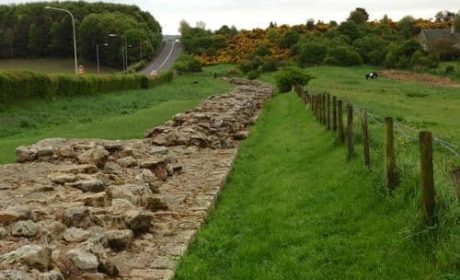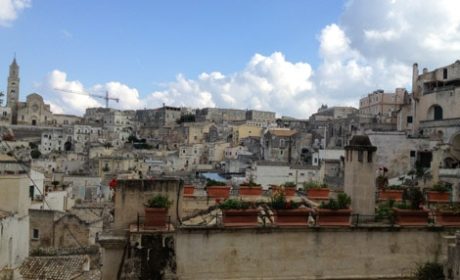Are you curious about your Scottish ancestry? Why did they come to North America? How did they live? Family history and cultural resources abound in Nova Scotia, even if your ancestors first landed further south. Today’s contributing writer, Vera Marie Badertscher from A Traveler’s Library and Ancestors in Aprons describes how to go about tracing your family roots back to Scotland.

Pictou: The Ship Hector, The Scottish Mayflower
The small town of Pictou, on the north shore of Nova Scotia, was settled by the first 189 Scots to arrive in the New World, in 1773. When you visit the replica Ship Hector in the Pictou harbor, you will understand clearly how determined these immigrants were to leave their old life and brave the dangers of the sea voyage and an unknown land.
A museum on the site explains the history behind the voyage, as well as the equally breath-taking story how hundreds of volunteers worked for ten years to construct the ship you wander around today. It is a heart-warming story of people honoring their heritage.

Pictou: The McCulloch Centre
If you want to pursue your Scottish ancestry in more detail – particularly if your Scottish ancestors arrived in Nova Scotia – the McCulloch Centre provides shelves and shelves of original documents, history and genealogy books, a helpful staff and rotating displays about the cultural history of the area.
On the other hand, if your interest runs more to seeing how older generations lived, you can visit the McCulloch House on a hill above the genealogical center. There you can tour an early 19th century mansion of a fascinating man, doctor, minister, politician and owner of a bird collection envied by James Audubon.

Iona, Cape Breton Island: Highland Village Museum
“How do you feel about leaving Scotland?” we asked the young woman at the round, sod-roofed house from the Highlands. “We hope for a better life in New Scotland,” she said.
Step back into history at Highland Village, a living history museum that presents homes and buildings from Gaelic Scotland in the 1770s up to 20th century homes and a general store. At each stop along the self-guided tour of eleven buildings, you will be greeted by costumed guides like this young woman who will answer your questions in character.

As we followed the path at the Highland Village through 200 years of progress we could see that the hopes of the early emigrants had been fulfilled. Be warned that the village is situated on a steep hill. Although there are benches along the way, it is not suited for people with serious mobility problems.
If your family came from Scotland to Nova Scotia, you’ll want to talk to the on-site genealogist at the Genealogy and Family History Center here, called Roots Cape Breton.
St. Ann, Cape Breton Island: The Gaelic College
We strugged to remember tongue-twisting words in Gaelic. We laughed and learned at the session on kilt making, and tapped our feet through a session on Celtic music and dance.
You don’t have to matriculate, stay in a dorm and do homework, in order to dip your toe into the Gaelic culture at The Gaelic College. Just take a break from your road trip along the must-see Cabot Trail that loops around Cape Breton Island. At the St. Ann’s campus, pay a small fee at the gift shop entrance, and head for the Hall of the Clans.
For more serious family history researchers, there is a complete archive to delve into. If you want to know something about the clan name of your ancestors and what plaid you are entitled to wear, you can find it here.
I purchased a booklet about the Anderson clan (my maternal grandfather’s name) and was fascinated to learn that the name derived from St. Andrew. My mother, an avid golfer who once visited the old course at St. Andrews, would have been thrilled to learn that.
Note: Be sure to check the websites for times and dates, because most attractions are open only from May through October.



